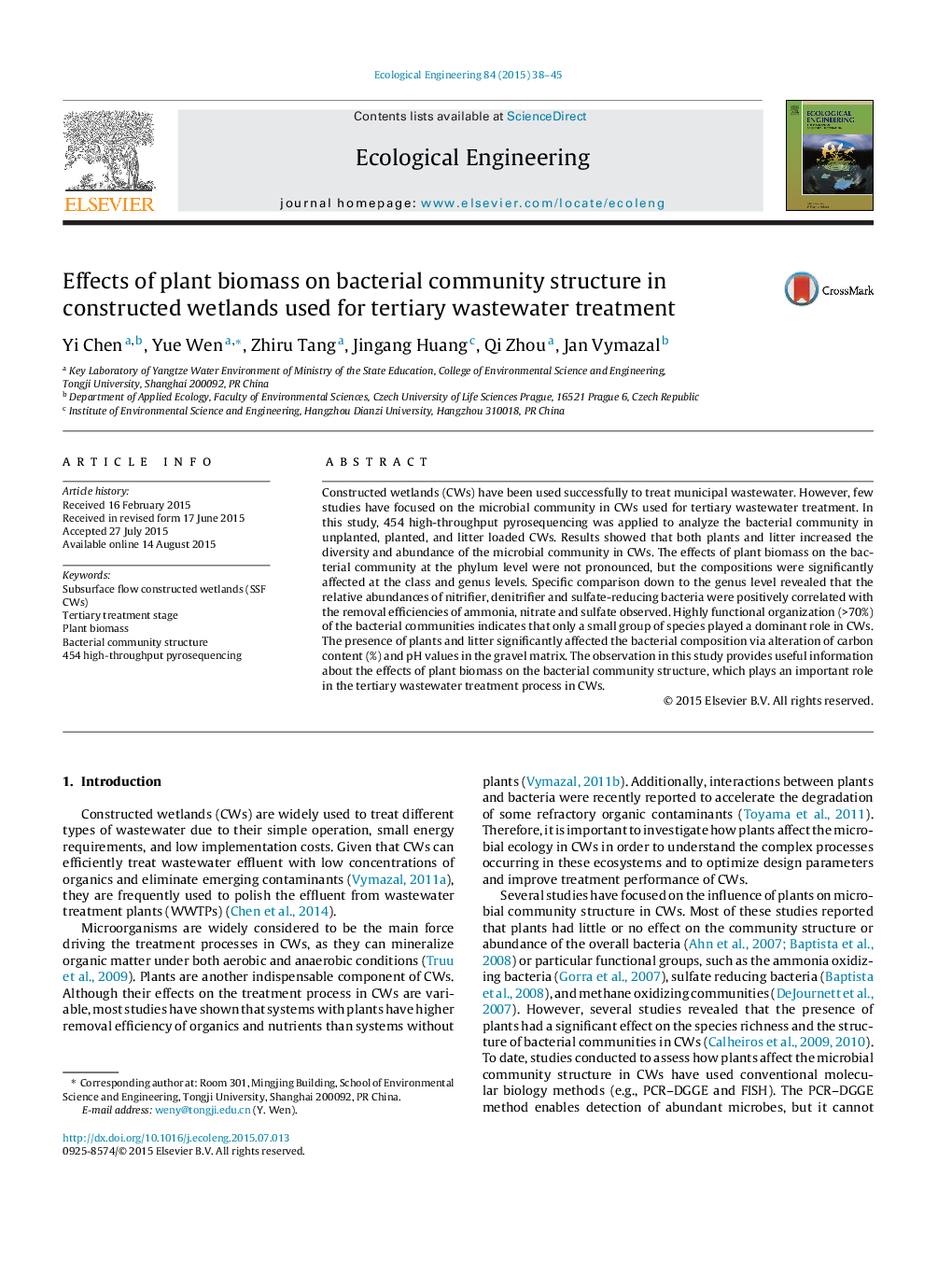| Article ID | Journal | Published Year | Pages | File Type |
|---|---|---|---|---|
| 4388763 | Ecological Engineering | 2015 | 8 Pages |
•Pyrosequencing detected 23 phyla, 39 classes and 325 bacterial genera in CWs.•Community structure was different, though functional organization was similar.•A small group of bacterial species played a dominant role in CWs.•Plant and litter increased diversity and abundance of bacterial community.•Plant biomass affected the bacterial composition via alteration of soil C and pH.
Constructed wetlands (CWs) have been used successfully to treat municipal wastewater. However, few studies have focused on the microbial community in CWs used for tertiary wastewater treatment. In this study, 454 high-throughput pyrosequencing was applied to analyze the bacterial community in unplanted, planted, and litter loaded CWs. Results showed that both plants and litter increased the diversity and abundance of the microbial community in CWs. The effects of plant biomass on the bacterial community at the phylum level were not pronounced, but the compositions were significantly affected at the class and genus levels. Specific comparison down to the genus level revealed that the relative abundances of nitrifier, denitrifier and sulfate-reducing bacteria were positively correlated with the removal efficiencies of ammonia, nitrate and sulfate observed. Highly functional organization (>70%) of the bacterial communities indicates that only a small group of species played a dominant role in CWs. The presence of plants and litter significantly affected the bacterial composition via alteration of carbon content (%) and pH values in the gravel matrix. The observation in this study provides useful information about the effects of plant biomass on the bacterial community structure, which plays an important role in the tertiary wastewater treatment process in CWs.
Graphical abstractFigure optionsDownload full-size imageDownload as PowerPoint slide
